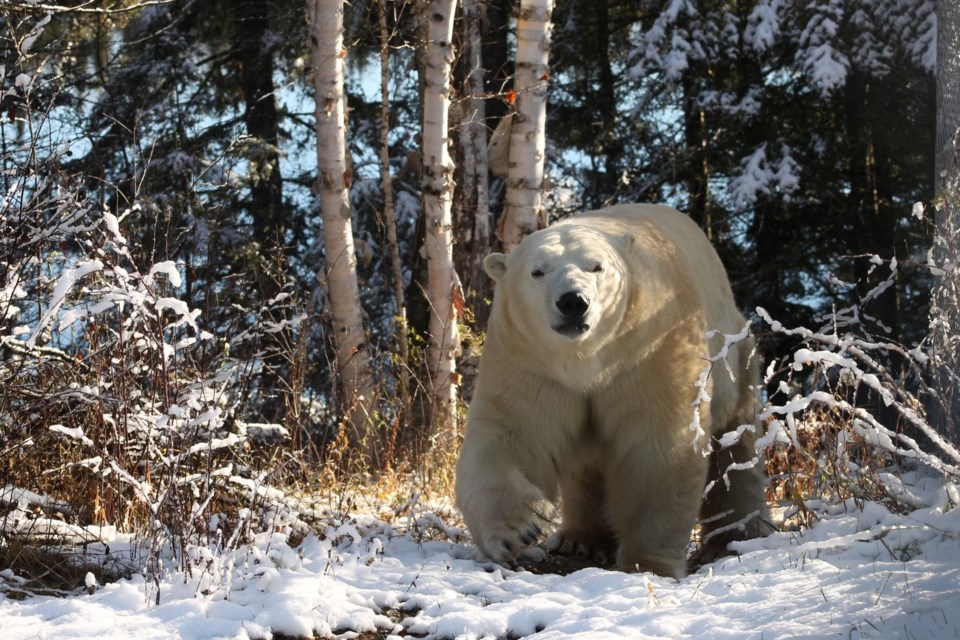COCHRANE — As uncertainty brews south of the border, Cochrane’s Polar Bear Habitat hopes to benefit from a growing number of Canadians choosing to stay closer to home.
As trade tensions linger, more Canadians are expected to take their summer vacations within the country. It’s a trend the habitat is leaning into as it ramps up for the busy tourism season, said Amy Baxendell-Young, the habitat’s manager.
“We are going to be campaigning and focusing on the staycation. We’re expecting to see a higher rate of local tourism. That’s what we’re aiming for,” she said.
“We definitely saw a huge increase in the staycation type of thing shortly after COVID.”
The facility is expanding its campground with more sites available this season and planning membership drives to encourage more local and regional visits.
Although the facility is located in a small northern town, it draws visitors from all over. Roughly 60 to 70 per cent of visitors come from as far away as the Greater Toronto Area, a more than seven-hour drive.
“Now we’re really looking to appeal more to people closer to home,” Baxendell-Young said.
“For a lot of places, it’s an easy day trip. They're still coming into town, spending money on gas, maybe eating out. Then those visitors from further away help support restaurants, hotels, so there’s a lot of financial benefit for the community.”
To promote regional tourism, the habitat is working closely with the Cochrane Tourism Association, as well as with larger organizations like Destination Northern Ontario and Destination Ontario.
As summer approaches, the Polar Bear Habitat is preparing for a full season of programming and improvements.
That includes onboarding new members to the animal care team and kicking off summer hours on May 17, when the facility will be open from 9 a.m. to 5 p.m.
Research also remains an ongoing part of the facility’s work.
While some U.S.-based studies have been put on hold due to funding cuts, Baxendell-Young said the habitat is still contributing where it can.
“A few projects have been wrapped up and published already, which is really exciting,” she said.
“Right now, we’re supporting some research into renal function in polar bears, working with a few facilities in the States.”
They recently provided sound recordings of their bears walking, eating and breathing for a new documentary being shot near Churchill, Man.
“It’s hard to get sound from a wild polar bear,” Baxendell-Young said.
“So we’re helping out. It’s a little different from heavily scientific research, but spreading information about polar bears, the environment, climate change, it’s all part of what we do.”
The habitat also participated in a groundbreaking study last year that tested a new tracking device designed to be less invasive than traditional collars.
SEE: Cochrane polar bears helping test tracking devices
The device attaches between a bear’s shoulder blades and is intended to fall off naturally when the bear sheds.
“Considering they were prototypes and we weren’t particularly well practised at attaching them, they did fall off,” said Baxendell-Young.
“Henry’s lasted a little bit over a month, but all the data we got was still hugely important, and it went into a published study.”
Another recent collaboration with Dalhousie University explored an unusual behaviour observed in the wild: why polar bears eat seaweed.
Baxendell-Young hopes every visitor leaves the habitat with a deeper understanding of polar bears and their connection to climate change.
“Especially right now, while we’re voting, while we’re going through the election, it’s really important that we think about the environment, about polar bears, and how all those things that affect polar bears actually affect us as well,” she said.
As for her favourite part of the job?
“Sharing the bears with the public and seeing their joy,” Baxendell-Young said. “For most people, seeing polar bears isn’t accessible. We’re proud to change that here in Cochrane.”




